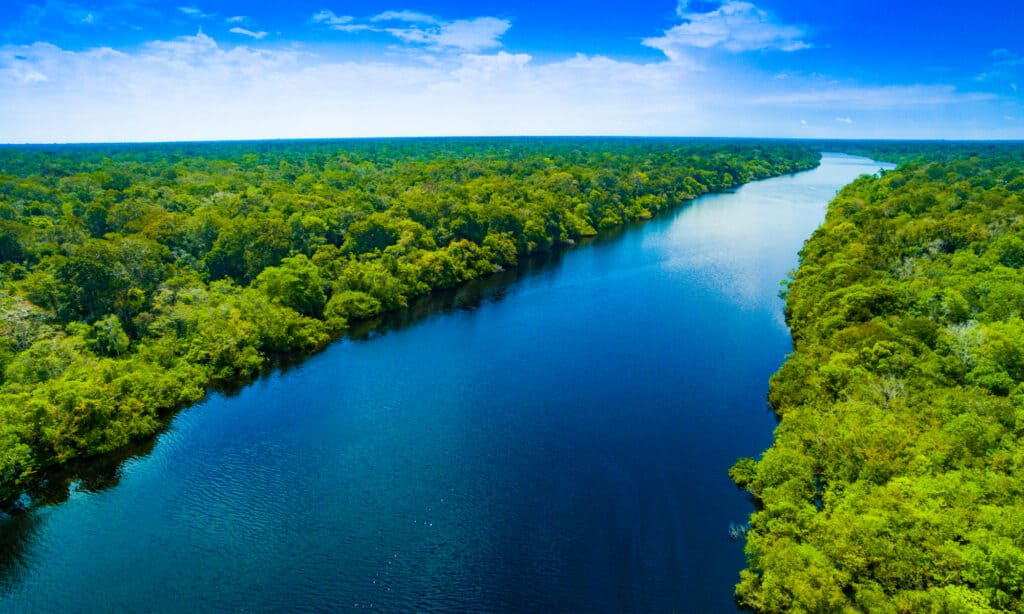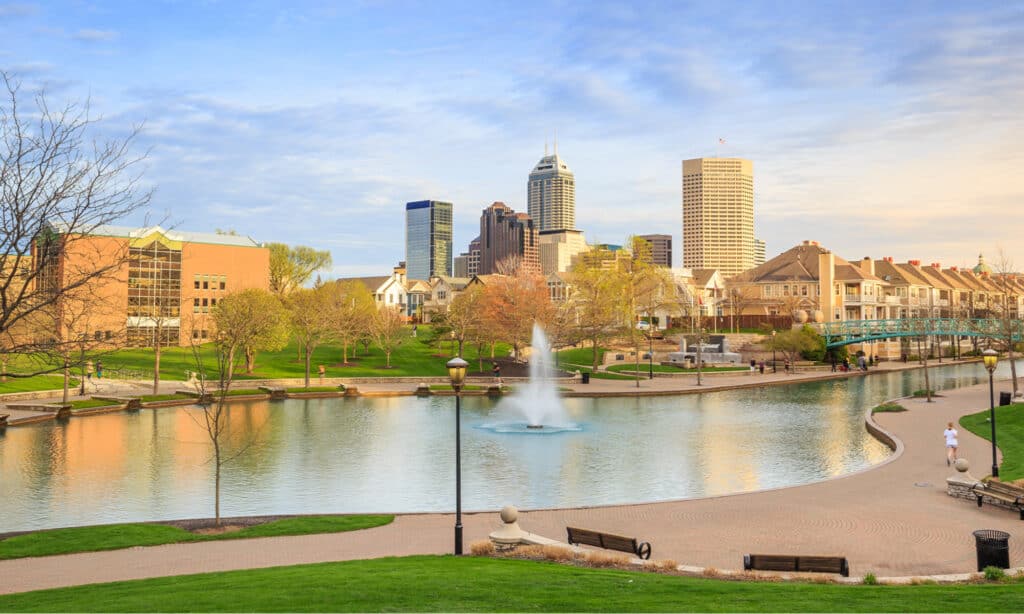Rivers only account for .1% of the dry land on the planet, but they’re at the forefront of the human mind because human civilization gravitates toward them. Rivers host most of the cities around the globe.
Building canals is a human activity that’s been going on since antiquity. There are canals in the middle east that are over 3,500 years old. Canals are still as vital to commerce as they were throughout history.
Since both rivers and canals are important to human civilization, what is the difference between a river and a canal? We’ll explain rivers vs canals and some other interesting facts.
| River | Canal | |
|---|---|---|
| Occurs Naturally | Yes | No |
| Purpose | Drain Watersheds | Support Human Activity |
| Used for Transportation | Yes | Yes |
| Used for Hydroelectricity | Yes | Yes |
| Floods | Yes | No |
| Current | Yes | Only by Design |
River vs Canal
These are the similarities and differences between a river vs a canal:
- Rivers exist where water flows naturally, whereas canals only exist where people build them.
- Rivers drain watersheds, whereas canals solely support human activity.
- Both rivers and canals are important for transportation, hydroelectricity, and other water supplies.
- Canals usually don’t flood, whereas rivers cause disastrous floods.
- Rivers have currents, whereas canals only have currents if they’re designed that way.
- Canals usually connect two waterways, whereas rivers move water from higher elevations to the ocean.
River vs Canal Explained
The linchpin in the river vs canal explanation is canals exist where water doesn’t flow naturally. Rivers, on the other hand, exist where water naturally gathers.
Canals are manmade and rivers are not. Rivers are meant to drain watersheds, whereas canals are completely human-made for a variety of different purposes.
Canals don’t cause floods, as they’re usually regulated by humans. Rivers, on the other hand, cause the most disastrous floods on earth. Rivers are often much longer than canals.
Canals only have currents if humans design them that way. Their currents can also change directions. Rivers flow one way only; though, some human adaptations circumvent the natural flow of a river.
What is a River?

Rivers are natural watercourses that move water from higher elevations to lower elevations.
©worldclassphoto/Shutterstock.com
Rivers are watercourses that are created naturally through the movement and collection of precipitation. Sometimes they are made through other phenomena like natural springs or melting glaciers.
Rivers drain a landmass and usually start small. They become bigger as they descend in elevation. They almost always have tributaries that increase their size as they approach the ocean.
As long as the elevation is slightly sloped, rivers flow through all kinds of terrain. They create gorges and canyons. Rivers also flow through plains, valleys, down mountains, as braided channels, and branch into deltas.
They continue until they empty into the ocean, a lake, or another river. Sometimes, they dry up before they reach their final destination. Rivers are full of freshwater except where they meet up with saltwater, like the ocean.
What is a Canal?

Canals are entirely manmade.
©f11photo/Shutterstock.com
Canals are manmade waterways. They are designed for use as shipping corridors, crop irrigation, drainage, and a variety of other uses. Canals are designed to connect existing bodies of water like rivers and lakes usually for the passage of boats.
Some canals are so artificial that the water has to be pumped into the canal to make it work. The water is usually sourced from reservoirs along rivers, lakes, or other large water sources. Very small canals are sometimes built on streams for local gardening.
Sometimes, canals are built to bypass dangerous sections of existing rivers. These canals run along the river so boats can safely pass and make it to their destination. They tend to zig-zag through drastic drops in elevation almost like a switchback hiking trail.
Locks are manmade barriers that span canals to block them off, change the height of the canal, and sometimes cause the water to flow in the other direction within the area between barriers. Some locks are tidal locks designed to keep a canal or a river at a constant level despite tidal fluctuations.
Long canals are rare. Some famous long canals are the Grand Canal in China and the Erie Canal in the US.
Are Some Rivers Manmade?
Rivers are often widened, deepened, straightened, dammed, or otherwise altered to suit human needs, such as transportation and hydroelectricity.
Weirs and locks are also a part of the manmade river landscape. A weir is a barrier in the river that impedes the flow of the river without stopping it. It is usually used to change the depth of a river.
What is the Panama Canal?
The Panama Canal is a long canal that connects the Pacific and Atlantic Oceans. Its position is where North America and South America divide. It’s a vital shortcut for boats traversing the globe.
Locks at the end of each side of the canal raise and lower water on either side of a reservoir. Boats come into the canal, the lock shuts, and the water is raised from sea level to the level of Gatun Lake. After crossing the lake, another series of locks shut and lower the boat back down to sea level on the other side.
On average, it takes less than 12 hours to make it through the entire canal.
What is an Aqueduct?

The California Aqueduct is a vital part of Southern California’s potable water supply.
©Shannon1 / Creative Commons – License
An aqueduct is a canal specifically used to transport freshwater for human consumption. Aqueducts are often the basis of municipal water supplies, irrigation, hydroelectric power, and agriculture. They are usually long so that water can flow from one type of terrain to arid areas.
America is home to the biggest aqueducts in the world. Famous aqueducts in the United States include the California Aqueduct, the Colorado River Aqueduct, the Central Arizona Project, and the Catskill Aqueduct.
Sometimes, pipelines are used along with aqueduct systems. This is to protect the water and stop the effects of evaporation. Aqueducts with more of a gradient are smaller and deeper than aqueducts with a low gradient.
What is a Wadi?
A wadi is a river that’s dry until heavy rains occur. The riverbed is generally wet, but no water flows for large portions of the year. Wadis are only found in deserts, and some countries rely on them as a major water source.
Wadis don’t have permanent channels because there isn’t enough water to carve one out. Their general location always exists, however, since it’s a natural watercourse.
They usually connect to a dry lake bed that doesn’t fill unless there is a flash flood. These flash floods are often devastating since there is no clearly defined channel, and dried loose sediment is often quickly moved around during these events. It’s hard to predict what areas near a wadi will be safe during a flood.
These differ from true rivers since there isn’t a constant flow of water. Sometimes, ecosystems rare in the desert form around wadis since there is ground water saturation. Humans have also adapted methods of tapping whatever permanent water source a wadi provides.
The photo featured at the top of this post is © f11photo/Shutterstock.com
Thank you for reading! Have some feedback for us? Contact the AZ Animals editorial team.






